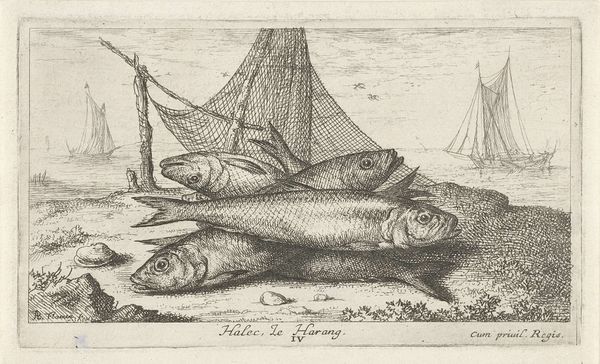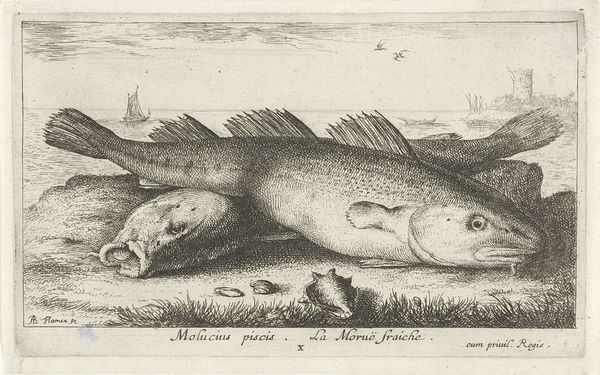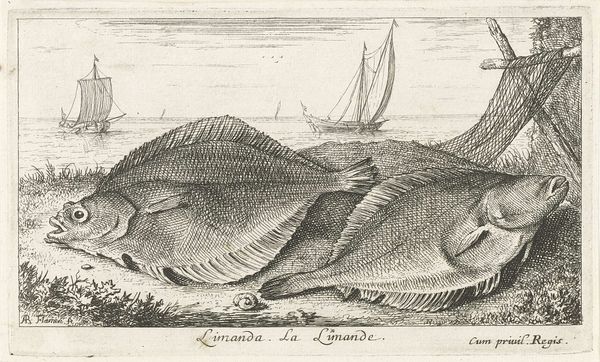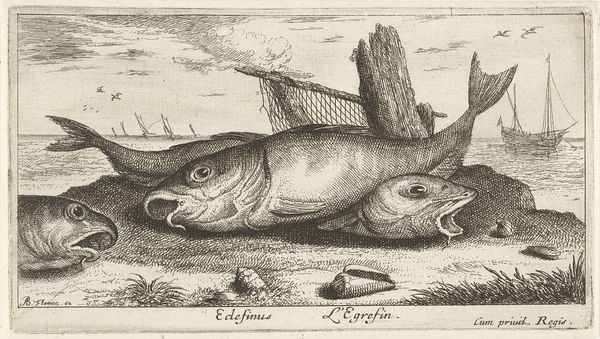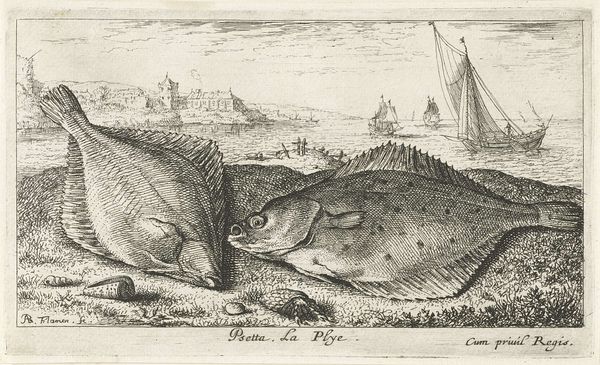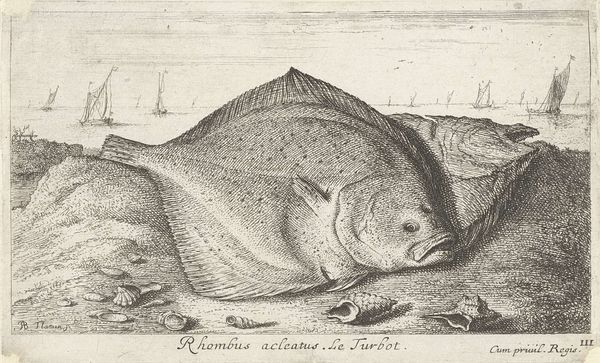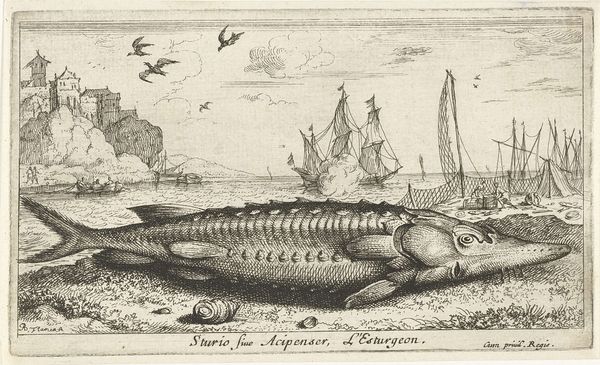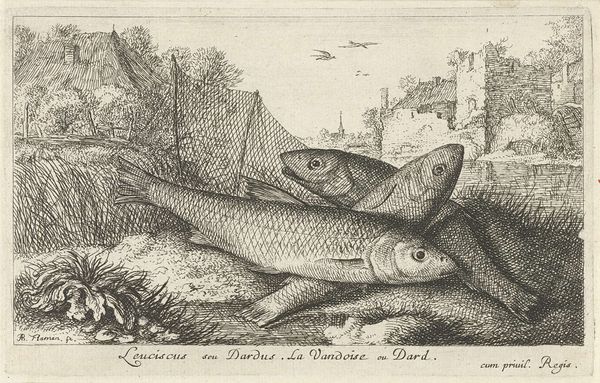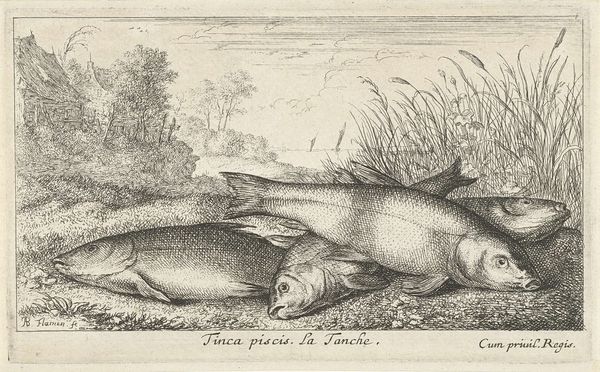
print, engraving
#
dutch-golden-age
# print
#
old engraving style
#
engraving
#
realism
Dimensions: height 106 mm, width 172 mm
Copyright: Rijks Museum: Open Domain
Editor: This engraving, "Twee wijtingen op het strand" or "Two Whitings on the Beach" by Albert Flamen, dates to 1664. It's a pretty straightforward depiction of two fish on the shore, but the level of detail is incredible, especially given the medium. I'm struck by the contrast between the still life in the foreground and the bustling marine scene in the background. What stands out to you about this piece? Curator: Well, looking at it from a historical perspective, it speaks volumes about the culture of the Dutch Golden Age. This wasn't just about accurately depicting fish; it reflected the economic and social importance of the fishing industry. It represents how the burgeoning merchant class defined themselves and projected a national identity rooted in maritime activities. Editor: That makes sense. The ships and figures on the beach give a wider view of maritime activity, but why two dead fish, precisely? Curator: Think about the role of imagery in that period. Scientific illustration was evolving. Note the Latin and French text: it's partly an attempt to document and classify. But it's also about abundance and prosperity—fishing meant wealth. It was powerful messaging during a time when Dutch sea power and commerce were on the rise. Consider also the intended audience - how does access to printed materials influence and create artistic taste and value among this rising middle class? Editor: So, more than just art; it's a statement about the Netherlands' place in the world? And printed images allow it to circulate to that broader audience, promoting that Dutch ideal? Curator: Precisely! What began as, say, documentation, evolved into assertions of national power and collective wealth circulated through newly-accessible printing methods. How different from a royal portrait serving a similar purpose? Editor: I never considered the propaganda aspect. It shows how intertwined art, science, and politics could be. I now appreciate the print on a new level. Curator: Indeed! Art, especially within institutions, often reflects power dynamics. Now you are seeing the piece in relation to its time, the forces, and the people that gave it context.
Comments
No comments
Be the first to comment and join the conversation on the ultimate creative platform.
